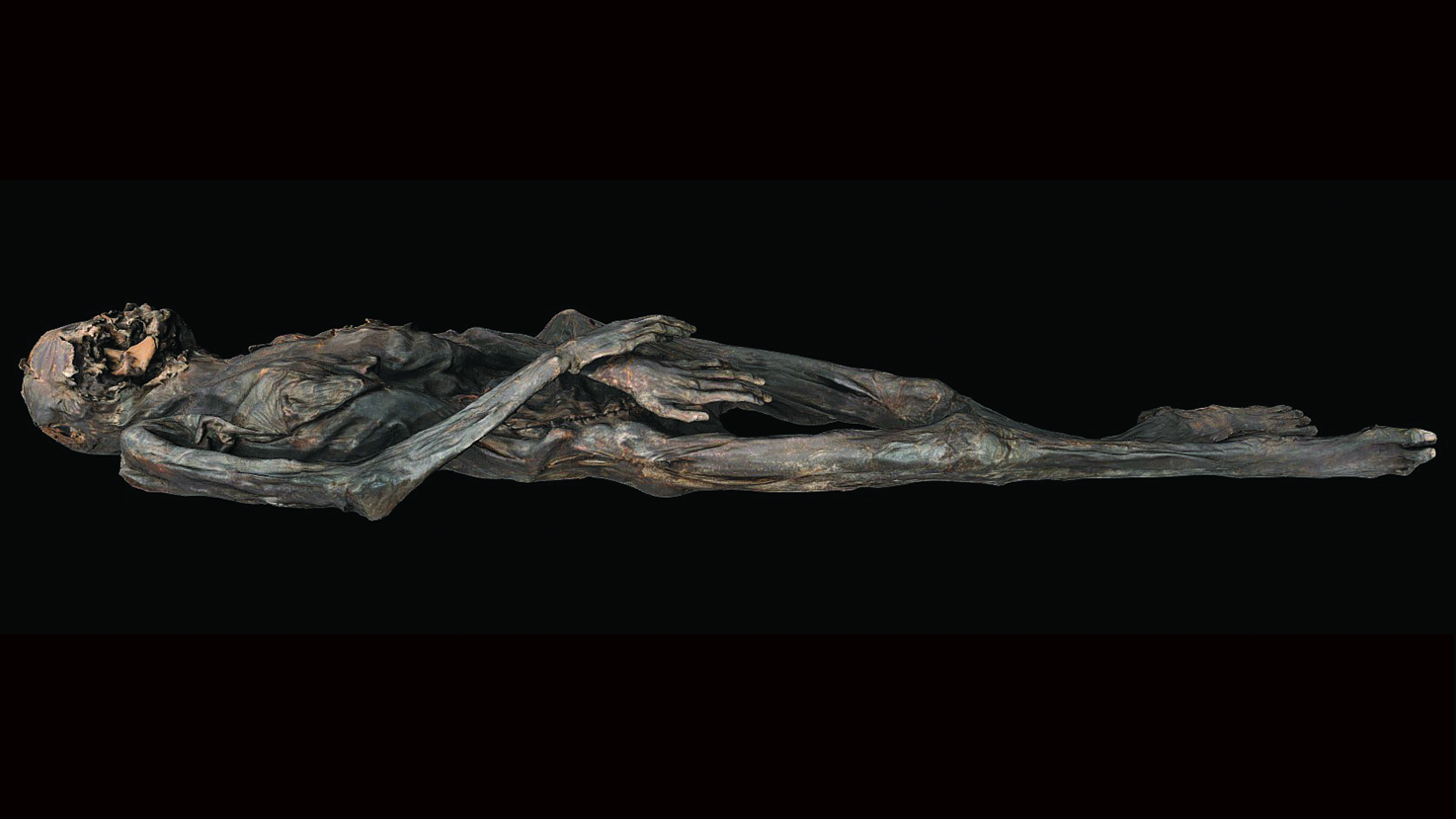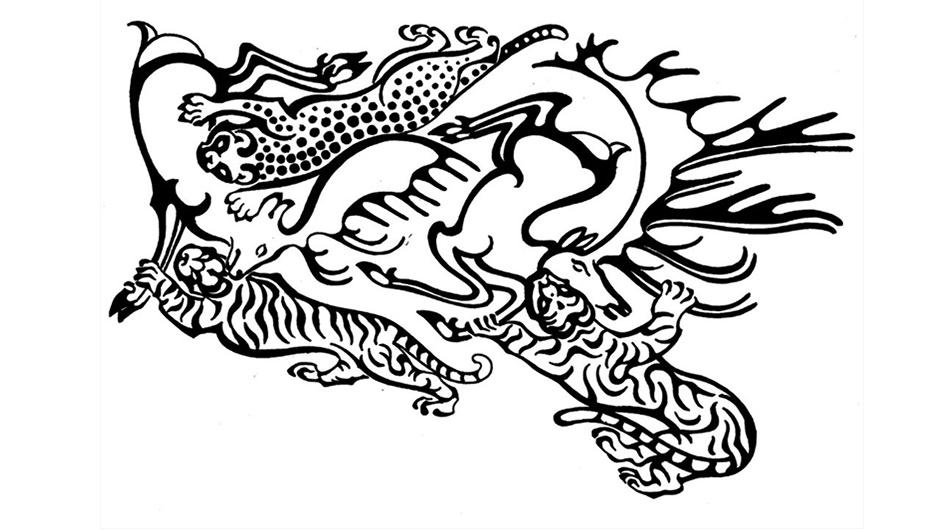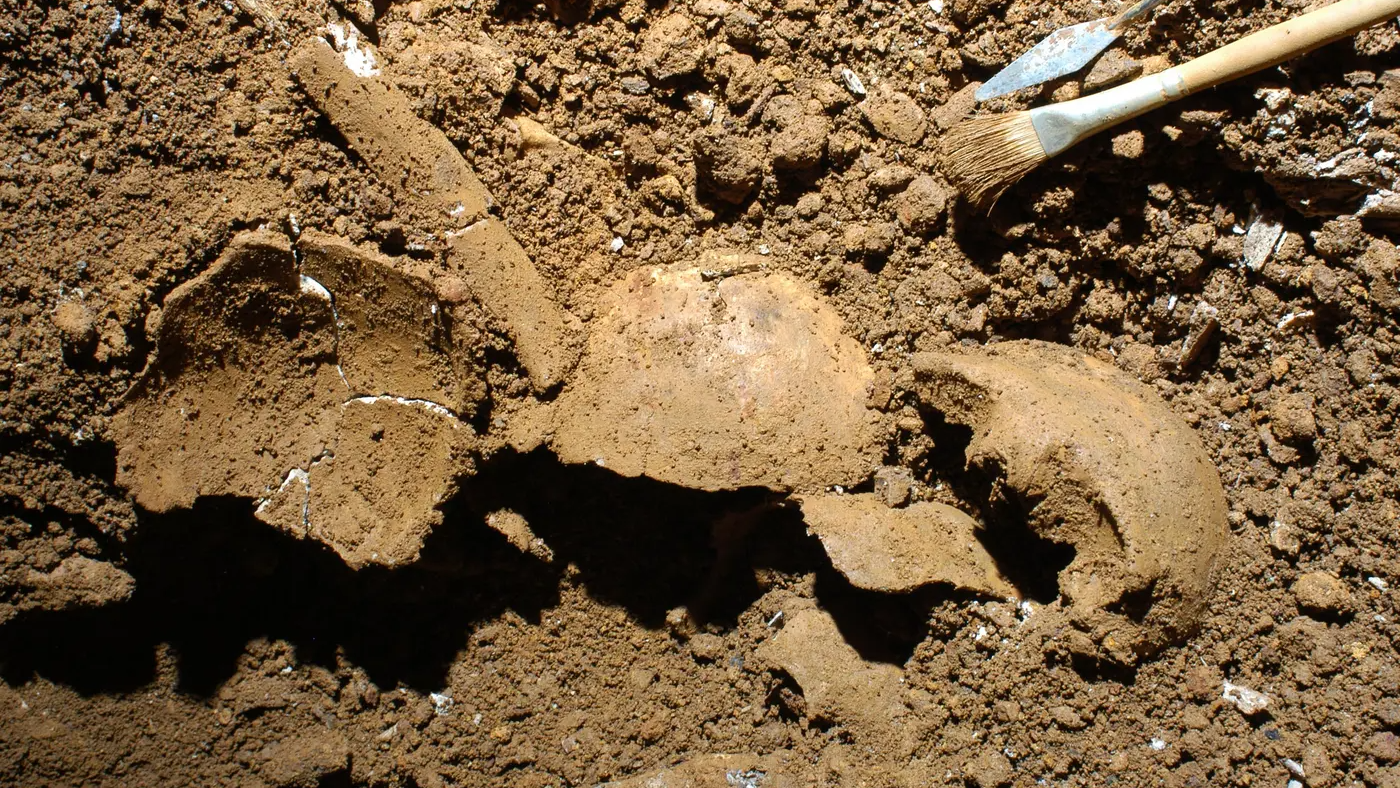2,300-year-old arm tats on mummified woman reveal new insights about tattooing technique in ancient Siberia
A new analysis used near-infrared photography to shed light on the methods and tools for creating tattoos in the Early Iron Age Pazyryk culture.

Fantastical animal imagery on the forearms of a 2,300-year-old mummified woman is revealing new information about the art of tattooing in ancient Siberia.
Thanks to cutting-edge photography, archaeologists have discovered that a virtuoso artist used a previously unknown tattoo tool to "hand-poke" the designs in multiple stages.
The new findings are detailed in a study published Thursday (July 31) in the journal Antiquity.
The Pazyryk ice mummies are well known for their preserved body decorations that depict animal fight scenes and mythical creatures, including an animal resembling a griffin. The nomadic Pazyryk culture, which was part of the ancient Scythian world, flourished in the Iron Age (sixth to second centuries B.C.). The Pazyryk buried their dead in huge mounds called kurgans, which were cut into the Siberian permafrost. This burial style, along with early embalming techniques, preserved the bodies of several nobles.
But when the first Pazyryk mummies were found in the 1940s, archaeologists did not notice some of the more subtle tattoos. Infrared imaging in the early 2000s led to the discovery of previously unseen tattoos on four Pazyryk mummies.
Now, near-infrared digital photography with submillimeter resolution has allowed archaeologists to look more closely than ever at the tattoos on one mummy, a 50-year-old woman who had tattoos on both hands and forearms.
Related: Stunning reconstruction reveals warrior and his weapons from 4,000-year-old burial in Siberia
Get the world’s most fascinating discoveries delivered straight to your inbox.
The new photographs show that the ancient woman's tattoos were made with lines of uniform thickness. Some lines were created using a multipoint tool, while others were made with a finer, single-point tool, the researchers noted in the study. Visible overlapping of lines revealed where the tattooist stopped working and picked up again.

"Many cultures around the world traditionally used bundles of plant thorns and spines to tattoo," study co-author Aaron Deter-Wolf, an archaeologist at the Tennessee Division of Archaeology and ancient-tattooing expert, told Live Science in an email. "We envision the multi-point tool as being a tightly clustered bundle of tines, probably bound together with thread or sinew."
But no solid evidence of tattooing implements has been found yet, probably because the tools were made of a biodegradable material, Deter-Wolf said.
Stylistically, the woman's right forearm tattoo — an animal fighting scene — had much greater detail than her other tattoos, suggesting they were made by a more experienced and skillful tattooist. It also likely took two or more sessions, as well as different tool arrangements, to complete the tattoo, the researchers wrote.
Little is known about Pazyryk tattooists, so it is unclear if the woman's forearm tattoos were made by multiple artists with different levels of expertise or by one artist over time. "Whether tattooing was done in a permanent workshop, on the move, or perhaps even as part of seasonal burial rites is unfortunately a question we can't answer yet," Deter-Wolf said.
"I've been a fan of this research team's work for a very long time," Matt Lodder, an art historian and tattoo expert at the University of Essex in the U.K. who was not involved in the study, told Live Science in an email. "Ultimately, these methods render tattoos indexes of individual lives as well as cultural belief systems," Lodder said, "and allow us to think about ancient tattoos as specific moments of creative practice."
The Pazyryk mummies may not have given up all of their secrets yet. Surprisingly, many of the tattoos were cut through during the embalming process, which could mean the Pazyryk did not believe the tattoos' social or spiritual meaning transferred to the afterlife, the researchers wrote.
On the other hand, "it's possible that cutting through the tattoos during embalming held some ritual significance," Deter-Wolf said. In the case of this mummy, her forearm tattoos had been cut, but her hand tattoos had not. "This is something we may be able to better investigate in the future using high-resolution imagery of other preserved tattoos from the region," he said.
Mummy quiz: Can you unwrap these ancient Egyptian mysteries?

Kristina Killgrove is a staff writer at Live Science with a focus on archaeology and paleoanthropology news. Her articles have also appeared in venues such as Forbes, Smithsonian, and Mental Floss. Kristina holds a Ph.D. in biological anthropology and an M.A. in classical archaeology from the University of North Carolina, as well as a B.A. in Latin from the University of Virginia, and she was formerly a university professor and researcher. She has received awards from the Society for American Archaeology and the American Anthropological Association for her science writing.
You must confirm your public display name before commenting
Please logout and then login again, you will then be prompted to enter your display name.


